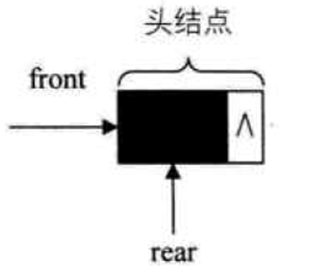线性表数据结构解读(四)队列结构Queue
2016-09-28 22:24
197 查看
在上一篇文章中,我们详细介绍了栈结构,并结合Stack源码进行了分析,相关文章大家可以点击这里回看我的博客:线性表数据结构解读(三)栈结构Stack



队列在顺序存储结构下所得到的结构,成为顺序队列。顺序栈类类似于数组,因此可以使用数组实现顺序栈的相关运算。
● 链式队列
队列在链式存储结构下所得到的结构,称为链队。链式队列类似于指针,在java中可以通过类的对象引用实现指针运算。

在Android中,我们常见具有代表性的队列结构为Queue,但是Queue确是一个接口,具体源码如下。
既然是接口,那么就有实现类,我之前给大家分析的LinkedList源码正是实现了该接口,具体可以查阅我之前的博客线性表数据结构解读(二)链式存储结构LinkedList
队列的定义
队列是一种插入和删除分别在两端进行操作的线性表,一端进行插入操作,一端进行删除操作。
队列的特点
我们把进入队列端称为队列的对尾,用rear表示;离开队列的一端成为队列的头,用front表示,即在队列的头进行删除操作。满队列
当一个队列rear指向最后一个位置时,不能够再进行插入操作,成为满队列状态。空队列
当front的位置在rear后面时,表示队列中没有元素可以离开,说明队列是空状态。
循环队列
队列的头尾详解的顺讯存储结构称为循环队列
队列的缺点
队列空和满都可能出现假空和假满的状态栈的存储结构
● 顺序队列队列在顺序存储结构下所得到的结构,成为顺序队列。顺序栈类类似于数组,因此可以使用数组实现顺序栈的相关运算。
● 链式队列
队列在链式存储结构下所得到的结构,称为链队。链式队列类似于指针,在java中可以通过类的对象引用实现指针运算。

在Android中,我们常见具有代表性的队列结构为Queue,但是Queue确是一个接口,具体源码如下。
public interface Queue<E> extends Collection<E> {
/**
* 添加方法
* Inserts the specified element into this queue if it is possible to do so
* immediately without violating capacity restrictions, returning
* <tt>true</tt> upon success and throwing an <tt>IllegalStateException</tt>
* if no space is currently available.
* @param e the element to add
* @return <tt>true</tt> (as specified by {@link Collection#add})
* @throws IllegalStateException if the element cannot be added at this
* time due to capacity restrictions
* @throws ClassCastException if the class of the specified element
* prevents it from being added to this queue
* @throws NullPointerException if the specified element is null and
* this queue does not permit null elements
* @throws IllegalArgumentException if some property of this element
* prevents it from being added to this queue
*/
boolean add(E e);
/**
* 入队方法
* Inserts the specified element into this queue if it is possible to do
* so immediately without violating capacity restrictions.
* When using a capacity-restricted queue, this method is generally
* preferable to {@link #add}, which can fail to insert an element only
* by throwing an exception.
* @param e the element to add
* @return <tt>true</tt> if the element was added to this queue, else
* <tt>false</tt>
* @throws ClassCastException if the class of the specified element
* prevents it from being added to this queue
* @throws NullPointerException if the specified element is null and
* this queue does not permit null elements
* @throws IllegalArgumentException if some property of this element
* prevents it from being added to this queue
*/
boolean offer(E e);
/**
* 移除元素方法
* Retrieves and removes the head of this queue. This method differs
* from {@link #poll poll} only in that it throws an exception if this
* queue is empty.
* @return the head of this queue
* @throws NoSuchElementException if this queue is empty
*/
E remove();
/**
* 出队方法
* Retrieves and removes the head of this queue,
* or returns <tt>null</tt> if this queue is empty.
* @return the head of this queue, or <tt>null</tt> if this queue is empty
*/
E poll();
/**
* 获取某一个元素方法
* Retrieves, but does not remove, the head of this queue. This method
* differs from {@link #peek peek} only in that it throws an exception
* if this queue is empty.
* @return the head of this queue
* @throws NoSuchElementException if this queue is empty
*/
E element();
/**
* 出队并删除掉
* Retrieves, but does not remove, the head of this queue,
* or returns <tt>null</tt> if this queue is empty.
* @return the head of this queue, or <tt>null</tt> if this queue is empty
*/
E peek();
}既然是接口,那么就有实现类,我之前给大家分析的LinkedList源码正是实现了该接口,具体可以查阅我之前的博客线性表数据结构解读(二)链式存储结构LinkedList
相关文章推荐
- 线性表数据结构解读(四)队列结构Queue
- 【C++】队列容器 头文件 #include<queue> 解读
- C#数据结构--队列Queue
- 解析Java中PriorityQueue优先级队列结构的源码及用法
- c++STL 数据结构之queue队列应用
- (队列的应用5.3.1)ZOJ 3210 A Stack or A Queue?根据进入结构的序列和离开结构的序列确定是stack还是queue)
- Nginx 队列双向链表结构 ngx_queue_t
- 【数据结构】顺序队列 Queue
- 队列(queue)数据结构
- 关于WORK_QUEUE,工作结构变量,工作处理函数,工作者线程,工作队列--细看
- 【数据结构】顺序队列_Queue
- ※数据结构※→☆线性表结构(queue)☆============优先队列 顺序存储结构(queue priority sequence)(十一)
- 线性表数据结构解读(五)哈希表结构-HashMap
- 数据结构基础-队列(循环队列、链式队列)以及STL中queue的使用
- ※数据结构※→☆线性表结构(queue)☆============优先队列 链式存储结构(queue priority list)(十二)
- nginx源码剖析---队列结构ngx_queue_t
- Nginx源码分析---队列结构ngx_queue_t
- 数据结构——线性表——队列(queue)
- PHP 数据结构队列(SplQueue)和优先队列(SplPriorityQueue)简单使用实例
- nginx源码分析—队列结构ngx_queue_t
